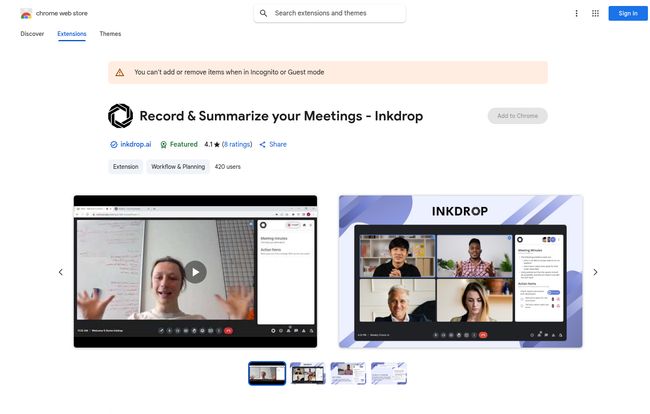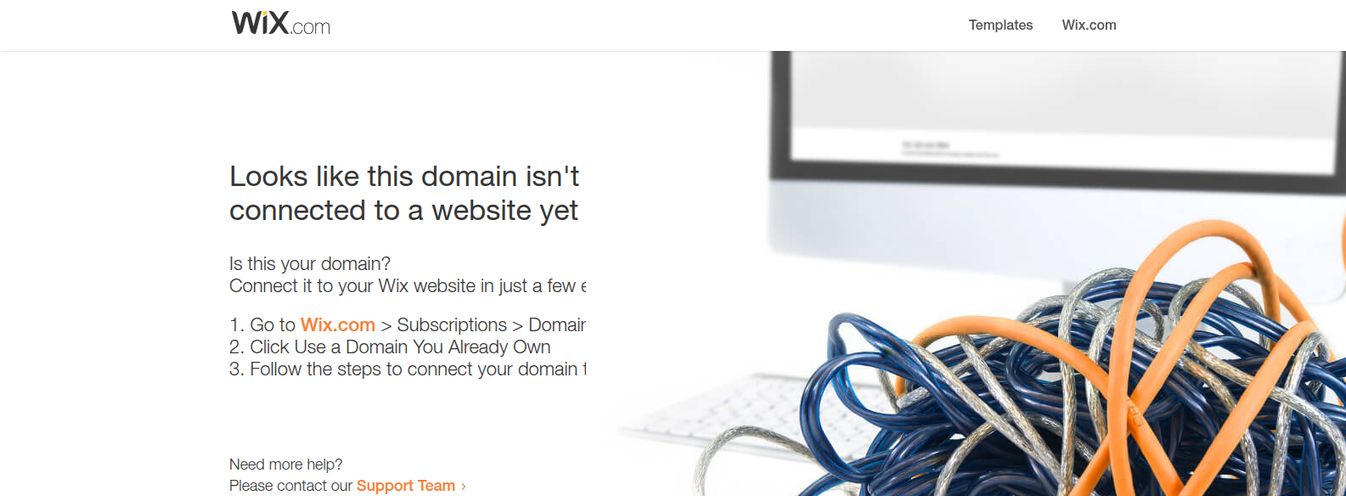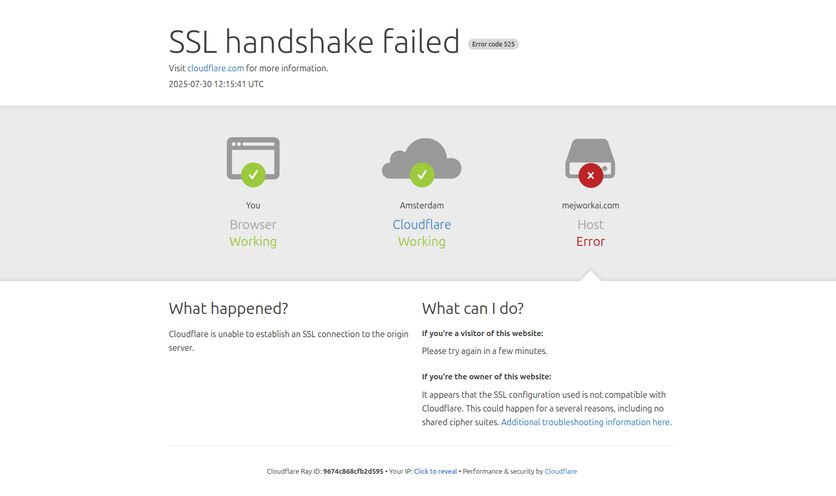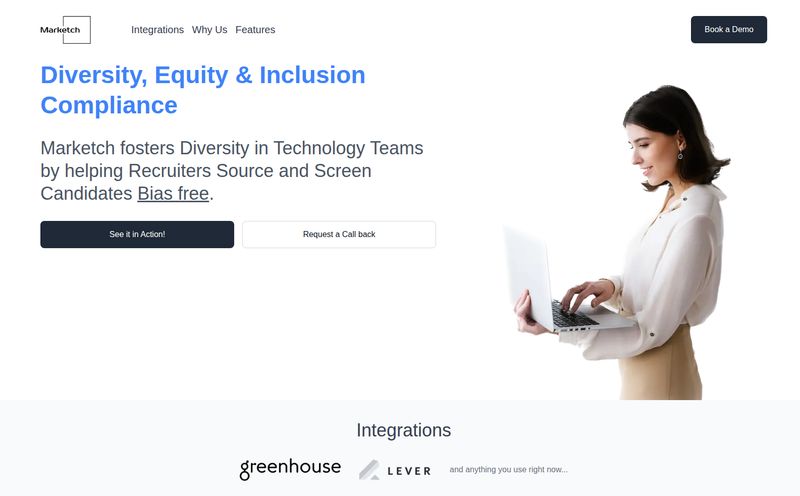How many times have you sat in a meeting, mindlessly nodding along, while secretly dreading the inevitable task of writing up the minutes? Or worse, you’re the one leading the call, trying to juggle the agenda, keep track of time, and somehow capture every brilliant (and not-so-brilliant) idea that gets thrown around. It’s a nightmare. Meetings, the supposed hubs of collaboration, often become black holes of productivity. My biggest pet peeve? When you finish a great call, everyone's aligned, and then... crickets. No follow-up, no action items, and the momentum just evaporates.
It seems like every week there’s a new AI tool promising to solve all our problems. The Chrome Web Store itself is practically shouting about AI these days. So, when I stumbled upon a nifty little Chrome extension called Inkdrop, my professional curiosity was piqued. Its tagline promises to help team leads “save 30% of their meeting time.” A bold claim. But is it just another drop in the AI ocean, or is it the wave we’ve been waiting for?

Visit Inkdrop
So What Is Inkdrop, Exactly?
In the simplest terms, Inkdrop is an AI-powered assistant that lives in your browser. Its whole purpose is to make your meetings less of a chore. Think of it as a hyper-organized, silent partner that joins your calls to do all the grunt work. It plugs into your Google Meet sessions and, using the power of ChatGPT, it records, transcribes, and then magically whips up a neat summary of what was discussed. No more frantically typing notes and missing half the conversation. The goal is to let you actually participate in the meeting, not just document it.
It's aimed squarely at team leads, project managers, and anyone who feels like they're drowning in stakeholder updates and follow-up emails. We've all been there.
The Real-World Problems Inkdrop Tries to Solve
I've managed enough projects to know that the space between meetings is where things fall apart. It's the gap between discussion and action. Inkdrop seems to be built to bridge that exact gap. It tackles a few of the classic pains of meeting culture:
- The Note-Taker's Burden: Someone always draws the short straw. While they’re busy capturing verbatim quotes, they're not contributing ideas. Inkdrop takes that role, freeing up a human brain for more important things.
- "What Did We Decide?" Syndrome: Two days after a meeting, nobody can quite remember the specifics of a decision. Having an objective AI transcript and summary ends the debate. The proof is in the pudding... or, in this case, the text file.
- Action Item Amnesia: The most crucial part of any meeting is the "next steps." Inkdrop is designed to automatically identify these and list them out, creating an instant to-do list so the ball actually gets rolling.
A Closer Look at the Features
Okay, let's get into the nuts and bolts. What does this thing actually do? It's not just a fancy tape recorder.
Your Personal Scribe and Summarizer
This is the main event. The core function is the automated transcription and summarization. After your meeting, instead of a jumbled page of your own notes, you get a clean transcript and a concise summary. This is gold for sharing with people who couldn't make the call or for just refreshing your own memory. It distills an hour-long discussion into the key takeaways. That alone is a pretty big win.
The Stealthy "No-Bot" Advantage
Here’s something that caught my eye. Some competing tools, like Fireflies.ai for example, join your meeting as a separate participant—a bot. It can feel a bit… intrusive. Like there's an uninvited guest at the table. Inkdrop's page on the Chrome Store says it works "without bot," which I take to mean it integrates more cleanly as an extension, capturing audio directly from your browser. This is a subtle but significant difference. It's less clunky and keeps the participant list clean. I like that. It feels more professional, especially on client-facing calls.
Keeping the Stakeholders Happy
One of the features mentioned is "stakeholder management." That's a bit of a buzzword, but in this context, it seems to mean making it super easy to share the meeting outcomes. You can quickly send the summary and next steps to your team, your boss, or your clients. This proactive communication can make you look incredibly on top of things, and it keeps everyone aligned without you having to manually draft five different update emails.
The Good, The Not-So-Good, and The Honest Truth
No tool is perfect. As a seasoned SEO and digital strategist, I've learned to be healthily skeptical. Based on what I've seen and the general nature of these tools, here's my take.
The upsides are pretty clear. You're going to save time, period. Automating minutes and action items is a huge efficiency boost. Your meetings will likely become more effective because you can focus on the conversation, and the follow-through is practically built-in. It’s a fantastic way to combat the natural human tendency to... well, forget stuff.
On the flip side, you're placing a lot of trust in the AI. If the transcription is wonky or the summary misses a crucial nuance, that could cause problems. You still need to give it a quick human review. It’s an assistant, not a replacement for your own judgment. Also, it requires a slight shift in how you run meetings. You have to get used to letting the tool do its thing and trust the process. Looking at the Chrome Web Store, it has a 4.1-star rating from a handful of users, which is pretty solid but also suggests it might have a few rough edges. It's not a magic wand, its a tool.
What's the Damage? A Look at Pricing
Ah, the all-important question: how much does it cost? Unfortunately, the Chrome Web Store page is silent on this. There's no pricing information listed. This usually means one of a few things: there's a free tier with premium upsells, it's a new product still figuring out its pricing model, or you have to visit their website to get the details. My guess is it’s a freemium model. For the latest and most accurate pricing, you’ll have to head over to their official website, inkdrop.ai.
Frequently Asked Questions about Inkdrop
1. How does Inkdrop work without a bot joining the meeting?
As a Chrome extension, Inkdrop integrates directly with your browser. It likely captures the audio stream from your Google Meet tab rather than needing a separate 'user' to join the call. This makes the process feel more integrated and less disruptive for other participants.
2. Is my meeting data secure with Inkdrop?
According to their privacy disclosure on the Chrome Web Store, the developer states that your data is not sold to third parties and is not used for purposes outside of the tool's core functionality. However, it does collect personally identifiable information and communications. As with any AI tool that handles sensitive data, it's wise to review their full privacy policy on their official website before using it for confidential meetings.
3. What meeting platforms does Inkdrop support?
Since it is a Chrome extension and the examples show a Google Meet interface, it's safe to assume it's primarily built for Google Meet. Support for other web-based platforms like Zoom or Microsoft Teams might be available, but you'd need to check their official documentation for confirmation.
4. Can I edit the AI-generated meeting summaries?
Yes, absolutely. It's highly recommended to review and edit any AI-generated text. The AI provides an excellent first draft, but a human touch is always needed to correct potential errors, add context, or refine the tone before sharing it with your team or stakeholders.
5. Is Inkdrop free to use?
Pricing isn't listed on the Chrome Web Store page. Many tools like this offer a free trial or a limited free plan to let you test the features. For detailed and current pricing information, you should visit the Inkdrop website.
So, Should You Give Inkdrop a Shot?
Here's my final take. If you're a team lead, a freelancer who juggles multiple clients, or just someone who is monumentally tired of meeting admin, then yes. I think Inkdrop is absolutely worth a look. The potential time savings are significant, and the ability to improve meeting follow-through is a genuine game-changer for team productivity.
It’s a lightweight, seemingly clever tool that taps into the current AI zeitgeist to solve a real, persistent problem. It won't run your meetings for you, but it might just make them suck a whole lot less. And lets be honest, in the world of back-to-back calls, that's a pretty compelling proposition.



